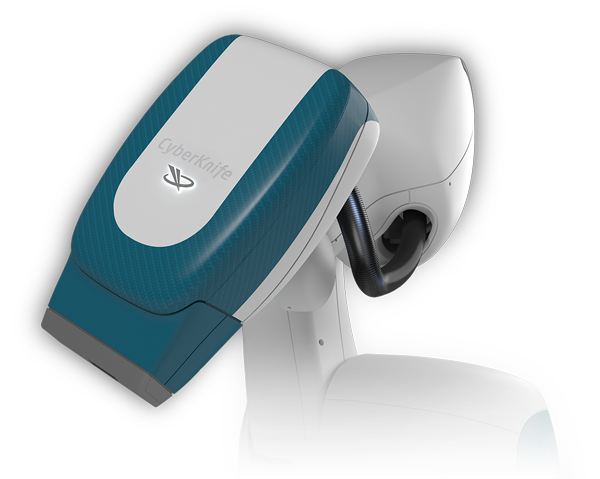An effective, less disruptive treatment option
The CyberKnife® System uses an approach called stereotactic radiosurgery (SRS), delivering precise high doses of radiation with sub-millimeter accuracy. The CyberKnife system uses an image-guided linear accelerator mounted onto a robotic arm that was specifically designed to deliver SRS. The system automatically synchronizes the delivery of radiation with tumor movement skull motion in real-time throughout treatment. This enables the CyberKnife System to maintain sub-millimeter accuracy, minimizing the dose to healthy and sensitive tissues surrounding the tumor, and reducing the risk of the most common side effects of traditional whole-brain radiation therapy.

